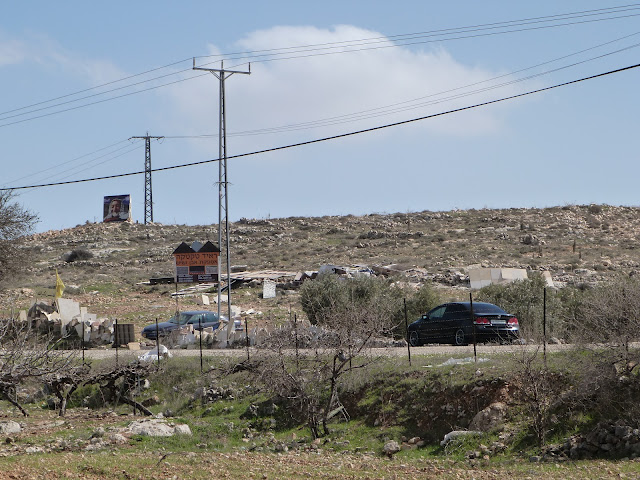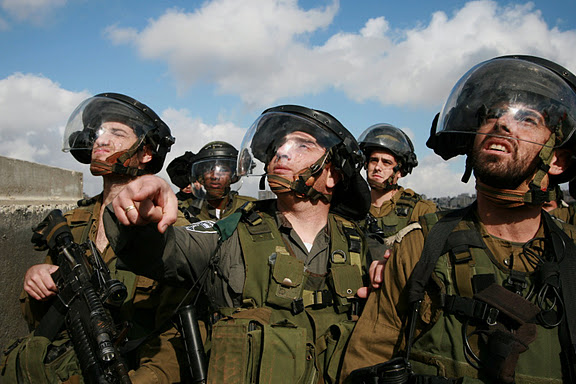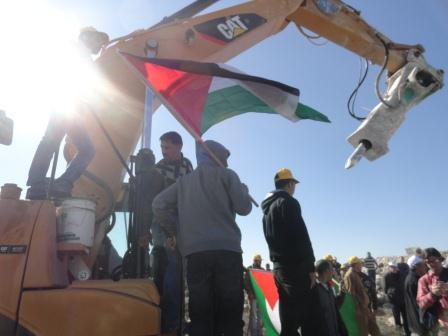Tag: Wall Construction
-
Al Ma’asara: House on the seam of looming Apartheid Wall becomes center for peaceful resistance
by Aaron 14 February 2012 | International Solidarity Movement, West Bank There is a place where a ground-level concrete line runs beside a country road through olive orchards, grape vines, blossoming almond trees, and homes—all Palestinian. This is the projected path of a new segment of Israeli Apartheid Wall through Al-Ma’sara, a small village 13…
-
Qalandia: White sky of tear gas looms over apartheid wall construction
by Rana H. 9 December 2011 | International Solidarity Movement, West Bank Peaceful protesters came face to face with Israeli Occupation Forces (IOF) in Qalandia on Friday before soldiers began to fire tear gas and rubber-coated steel bullets at the civilian group including children, women, and elders. Qalandia village is protesting the construction of the…
-
Locals protest as Israeli barrier rips through Qalandia
7 December 2011 | International Solidarity Movement, West Bank Today, in the town of Qalandia, north of Ramallah, Palestinian and international solidarity activists tried to stop the illegal construction of the separation wall. The Israeli government issued a map that shows the new tracing of the wall. According to this map the wall would take more…



